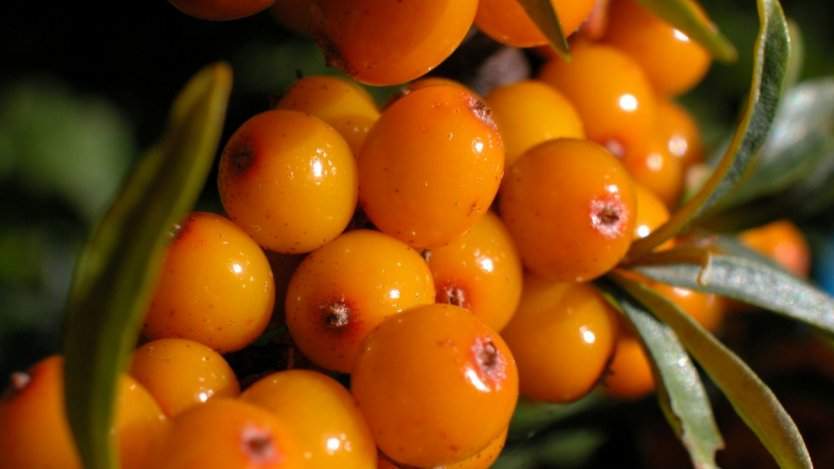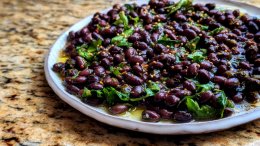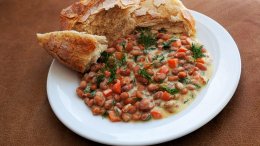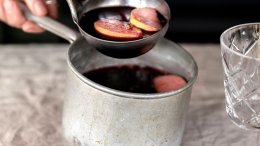We all know about blackberries, blueberries, raspberries, and strawberries, but have you heard of these slightly more obscure, but equally delicious varieties?
Mulberry
One of the more recognized varieties on this list, mulberries are similar to blackberries, but slightly smaller in size. Unlike other berries, which commonly grow on bushes or brambles, the morus plant which produces mulberries is actually a deciduous tree. Red mulberries in particular are an endangered tree in Canada, so consider yourself lucky if you can get your hands on their berries (some of the largest populations of them exist along the Niagara Escarpment in Ontario). They are also full of good-for-you anthocyanin pigments. Look for fresh one around the middle of summer, or the dried variety year-round.
Lingonberry
Admit it, you probably know of lingonberries because of the lingonberry juice you’ve guzzled on torturous trips to IKEA (I can’t be the only one who has done this, right?). Ever-popular in Scandinavia, lingonberries look and taste similar to cranberries. They are admittedly lesser-known in Canada but can be found in some of our colder, northern regions in Manitoba, Quebec, and most prominently, Newfoundland, where almost 100,000 kilograms are produced per annum. Look for them come late summer, early fall.
Loganberry
Loganberries are named after James Harvey Logan, the horticulturalist who produced this hybrid in the late 1800s in Santa Cruz, California by crossing Rubus ursinus (blackberries) and Rubus idaeus (raspberries). In Canada, they are mostly grown in British Columbia and Ontario, with harvest starting mid-summer through mid-fall. Although they look more like blackberries, shape-wise, their dark red flesh is more reminiscent of their raspberry parent. Because of their tartness, try macerating them with a bit of sugar and serving over barely-sweetened cream for a simple, summer dessert.
Tayberry
Similar to the loganberry, the tayberry is also a cross between a blackberry and a raspberry. It gets its name from the Tay river in Scotland, and also its hardiness from being grown in this relatively cold, damp location. B.C. and Ontario are the primary growing regions for tayberries in Canada. These bright, red fruits are quite large and look a bit like colourful pinecones. They’re sweeter than loganberries and when ripe, and are best eaten as-is (note that the harvest is from mid- to late-summer).
Marionberry
You might think that the marionberry was named after a guy called “Marion”, but nope. This cross between two varieties of blackberries was actually developed at Oregon State University by George Waldo. Marionberries were originally grown in Marion County, Oregon, hence the name. They now account for over half of all blackberries produced in that state and are harvested for about a month between July and August. In Canada, they are grown along the West Coast a little farther north up from Oregon. They tend to be larger, juicier, and sweeter, with a more prominent flavour than the average blackberry. Marionberry ice cream sounds like a good way to go.
Cloudberry
Known as bakeapples in Newfoundland, where they are predominantly found, cloudberries look like what you would get if you crossed the shape of a raspberry with the coloration of a Rainier cherry. Legend has it that a French explorer who discovered them asked, “baie qu'appelle?” or “What is this berry called?”
Baie qu-appelle became baygapple, became bakeapple. Who knows? We’ll take it.
They grow in cool, marshy environments throughout Northern Canada. In addition to Newfoundland and Labrador, this includes provinces like Quebec. Cloudberries are characteristically tart and are great made into jams for all sorts of dessert applications. They ripen and are ready to eat around the end of summer.
Haskap Berry
Haskap was the name given to this deciduous, fruit-bearing shrub by the Japanese, but it also goes by blue honeysuckle and honeyberry in other parts of the world. Haskap was introduced to Canada by the fruit breeding program at the University of Saskatchewan, and is well suited to our country’s colder temperatures and short growing season. Haskap berries look somewhat like oblong blueberries, and taste a bit like a cross between blueberry and Saskatoon berry. Funny enough, they aren’t actually related to blueberries. Rather, they are a member of the same family as elderberries. Their flavour goes great with chocolate should you want to pair the two in a trifle perhaps?
Sea Buckthorn
Sea buckthorn has taken the culinary world by storm in the past couple of years. From sea buckthorn mignonette served with oysters, to sea buckthorn caramel sauce drizzled on desserts, more and more restaurants are putting sea buckthorn on their menus. But what is it actually? Sea buckthorn is a deciduous shrub that produces tiny, orange berries that are astringent and sour, although super high in both vitamin C and carotenoids. They were originally planted in Canada to help prevent soil erosion, but have been used for both medicinal and culinary purposes across Europe and Asia throughout history. The berries ripen by late August, early September and can be found from coast to coast.













